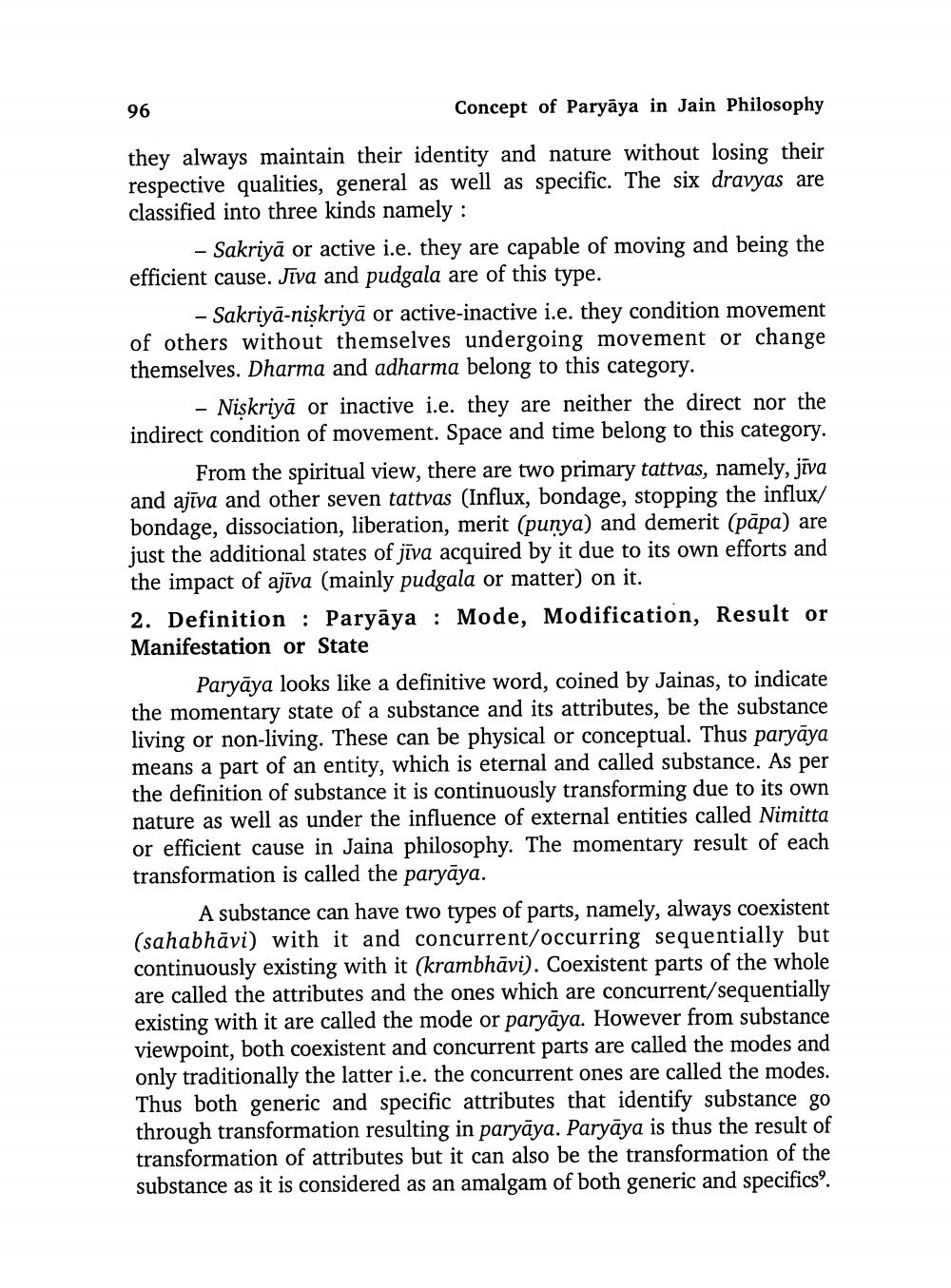________________ 96 Concept of Paryaya in Jain Philosophy they always maintain their identity and nature without losing their respective qualities, general as well as specific. The six dravyas are classified into three kinds namely : - Sakriya or active i.e. they are capable of moving and being the efficient cause. Jiva and pudgala are of this type. - Sakriya-niskriya or active-inactive i.e. they condition movement of others without themselves undergoing movement or change themselves. Dharma and adharma belong to this category. - Niskriya or inactive i.e. they are neither the direct nor the indirect condition of movement. Space and time belong to this category. From the spiritual view, there are two primary tattvas, namely, jiva and ajiva and other seven tattvas (Influx, bondage, stopping the influx/ bondage, dissociation, liberation, merit (punya) and demerit (papa) are just the additional states of jiva acquired by it due to its own efforts and the impact of ajiva (mainly pudgala or matter) on it. 2. Definition : Paryaya : Mode, Modification, Result or Manifestation or State Paryaya looks like a definitive word, coined by Jainas, to indicate the momentary state of a substance and its attributes, be the substance living or non-living. These can be physical or conceptual. Thus paryaya means a part of an entity, which is eternal and called substance. As per the definition of substance it is continuously transforming due to its own nature as well as under the influence of external entities called Nimitta or efficient cause in Jaina philosophy. The momentary result of each transformation is called the paryaya. A substance can have two types of parts, namely, always coexistent (sahabhavi) with it and concurrent/occurring sequentially but continuously existing with it (krambhavi). Coexistent parts of the whole are called the attributes and the ones which are concurrent/sequentially existing with it are called the mode or paryaya. However from substance viewpoint, both coexistent and concurrent parts are called the modes and only traditionally the latter i.e. the concurrent ones are called the modes. Thus both generic and specific attributes that identify substance go through transformation resulting in paryaya. Paryaya is thus the result of transformation of attributes but it can also be the transformation of the substance as it is considered as an amalgam of both generic and specifics'.




